The Last of Us Part II – Review
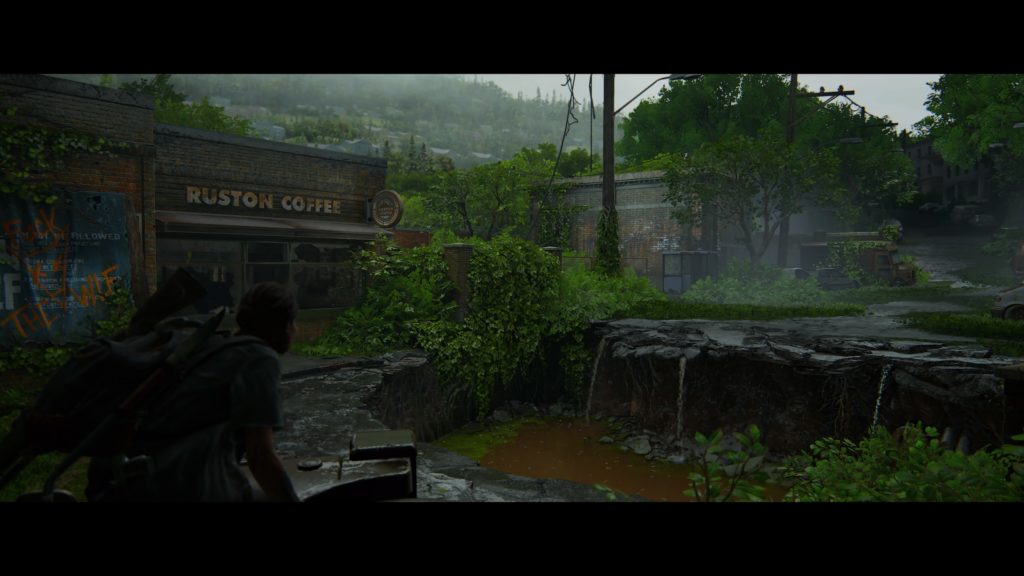
“These people are psychos,” quips Dina, my girlfriend, as we make our way through the streets of Seattle. Our faces are covered in blood. It’s not ours. Dina is convinced the Washington Liberation Front (or Wolves, as they call themselves) — whose blood it is — are the “psychos” despite this. Earlier, we talked about when the two of us had first killed another person. Not a fungal walker, the shambling menace at the heart of this zombie apocalypse, but a real live human being. 10 years old, she says. It was self-defence. “You’ve got me beat,” quips Ellie, half a chuckle lingering behind her voice.
Video games and violence are well acquainted. For many games, the primary interaction interface is through shooting. Where point and click adventure games saw you pointing and clicking on pixels containing puzzles, shooters have had us pointing and clicking at heads for decades. The biggest games in the world — Fortnite, League of Legends, Dota II — hinge on players interacting with the game world and each other through a lens focused primarily via violence.
And frank discussions about this relationship have been had before. It’s not new territory. Death Race saw people worried about the lives of gremlins. Mortal Kombat was the subject of US Congressional Hearings. Jack Thompson rose to infamy by pursuing the conversation ad naseum. Gamers got used to defending the relationship.
On the other side, games confronted us with our violent actions in a variety of ways. The aforementioned Mortal Kombat used it for komedy. Manhunt was upfront in labelling the player character as a psychopath. Spec Ops: The Line tried to confront us with the horrors of war. And many other games have worked hard to get us — the player — to link our actions with the violence committed by the player character.
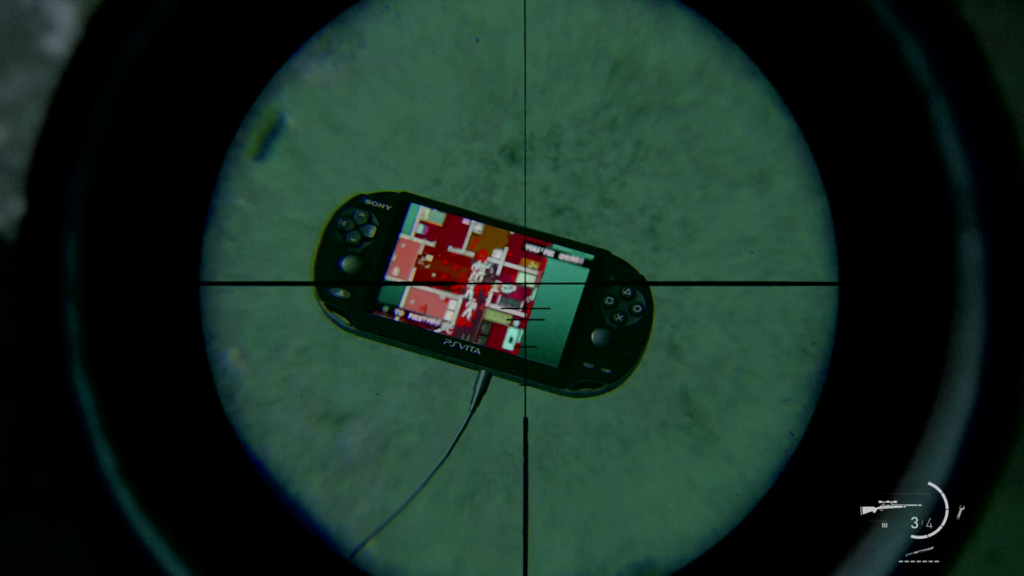
Bullet in the Head
Few have worked nearly as hard as The Last of Us Part II.
Things get off to a slow start, in my opinion. Like any good story, there’s setup work involved before we can get to the payoff and TLOU2 needs quite a bit of setup. ███ ████████, ██ █████ ███ ████ ███████ ██ ████. ████ █ █████ ████ █████ █ █████ ███████████████. The idea is that players will be reminded of our connection to the first game██ ███████████ █ ██ █████████ █████ ███ ██████ ██ ████.
Over the course of the next ninety minutes or so, tutorialising will see us play ██ ████, █████ ███ ████████ ████. We’re introduced to key characters — Dina, Tommy, Owen, Jesse — and then, before long, we reach the pivotal moment in the game’s setup. ████ █ ███ ████████ ██ █ ██████ ████ ███ ████████ ████ ███████████ ████ ███ █████ █████ █ █████ ████. ██ ██ █ ██████ ███ ██ ███████ ██ ███ █████ ███ ██ █████ ████ █ ████ ████. ██ ██████ ███ █████████ █████ ██ ████ ██ ███ ██████, ███ ████ ████████ ███ ██████, ███ ██ █████ ███████ ██ ██ ██████ ████ ██████ ███ ██████ ████ ████ ███ ████ ████ █ █████████ █████.
So begins The Last of Us Part II.
It’s been described as a revenge tale, and I understand it entirely. I didn’t love The Last of Us. If video games are on a spectrum between ‘play’ and ‘narrative’, I err on the side of play. And I felt that the first The Last of Us was severely lacking in that department — tedious stealth and monotonous scavenging lead me to feel it had overstayed its welcome.
This muted the otherwise thunderous impact the end of the game had on me — here was the trolley problem played out for us in real-time, but instead of feeling like the game had successfully justified throwing the switch one way, I couldn’t help but consider the implications on a global scale.
But even as someone who felt that ████ ███ ██████████ ███ ███████ ██ ███ █████ ████, █ █████ ████ ██████████ ██ ███. ██ ███ █████ ██ ██████ █████████, ██ ██████ ████ ███ ████ ██ ██ ████████. ██ █ ██████████ ███ ██████ ██ ███ ███████ ██ ███ ████████.
I relished the opportunity to take up the reins as Ellie, ██ ████ ████ ███ ██████ ██ ███████ ███ █████ ██ ███████ ████ █ █████ █ ████ ███ ██████ ██ ███. ██ █ █████ █████ ███████ ██ █████████████ ██████, ███ ██████ ██ ███ ███████ ████ ████ █ ██████████ ██ ███ ███████ ████ ████ ████ ███ █████.
Se(a)ttle for Nothing
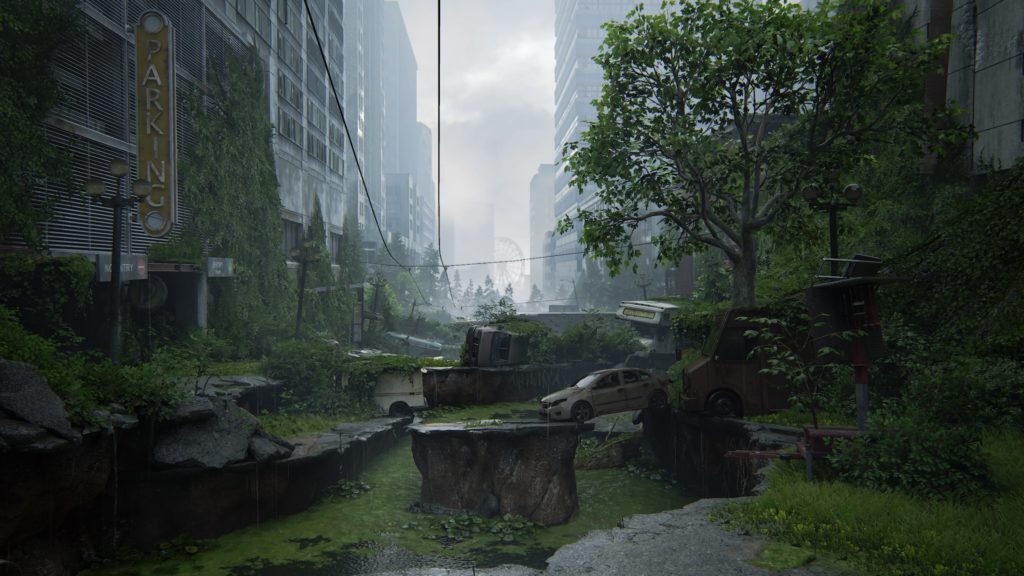
TLOU2 immediately impressed. I mean even beyond the superficial — because TLOU2 is superficially exceptional. It’s probably the best looking console game of its generation, a demonstration of the ultimate power of the PlayStation 4 Pro (which is what I played on).
But once it began properly it surprised me. After all, The Last of Us Part II is a linear single-player narrative experience — the type of game falsely declared dead a few years ago.
And while the prologue portion of the game is linear as hell, when you first reach Seattle you’re treated to an open-world experience. You can tackle objectives in (roughly) any order you choose, you stumble across an array of side objectives, you can find weapons early if you know where to look and you can pretty much do as you please. It’s faux-pen world — a look behind the curtain reveals that it’s still a very linear experience — but it allows for a significant amount of exploration while you do what you must.
Before long, this faux-pen world gives way to a much more linear game. The broad eight or so blocks narrow to a single intersection, making it wider than the streets littered with waist-high cover you see in Gears of War, but a pale shade of what it had been when you first arrived in Seattle.
I don’t really have a problem with this. I think The Last of Us Part II does a phenomenal job of using this limited space to provide players with a wide array of choices. These narrowed streets allow TLOU2 to focus its efforts on providing compelling stealth combat experiences — something it is far, far better at than the first game.
Freedom
Where it falls over is in the rigidity of its exploration. Through a variety of collectibles, The Last of Us Part II encourages players to thoroughly scour every single part of its block-wide locales. Trading cards and background-detailing letters provide depth for characters and environments alike, bolts let you upgrade weapons and pills let you upgrade your playable character.
Every so often you’ll come across a puzzle built entirely out of environmental detail, and if you want to solve it you’ll need to scour the game world for clues. It could be as simple as reading a letter or as complex as finding a tiny lottery ticket on a nearby corkboard and zooming in on the minute numbers.
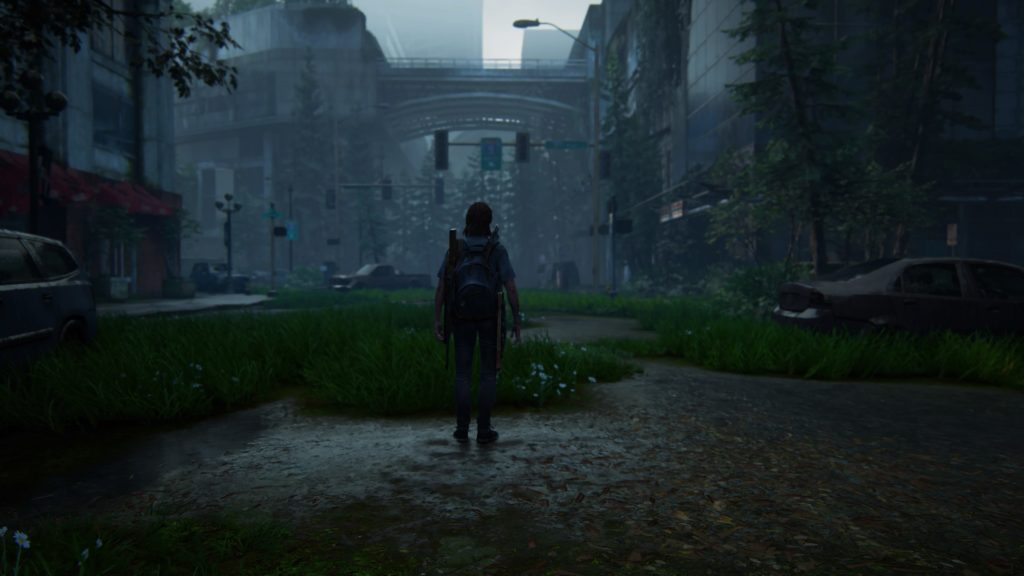
It’s a flex, a demonstration from Naughty Dog of how much unique detail they’ve packed into each area. How the environments they’ve crafted feel lived in — or not lived in, as it were — and like places that could ostensibly exist in real life. Coupled with the graphics and it’s hard not being wowed by the ‘realism’ of the game.
And all of this is bolstered by the new traversal mechanics, which create platforming puzzles out of every area. You can climb practically anything that looks climbable or crawl under anything you might fit through, freeing level designers from the tyranny of set-block heights which destroy immersion.
Wake Up
But that realism comes at a cost. Too often TLOU2 commits what I believe is a cardinal sin in linear-game level design. After the initial flirtation with open-world freedom, TLOU2 is broken up into those single-block-sized sections, areas you move between as you power through the story Naughty Dog has crafted, and that movement is strictly one-way.
Once you’ve entered a new area, you can’t go back. Sometimes this is justified through the narrative itself — a collapsed building, a sinkhole, a fire — but more often than not it’s just a suddenly locked door or an insurmountable four-foot-high fence.
And in a game flooded with collectibles, this is a huge error. Nothing sucks more than to search high-and-low through a sewer for the last part of a safe code only to find yourself stuck on the wrong side of a wall Ellie should be able to scale without issue. Worse still is realising the only thing stopping you from going back — apart from the ledge that actual children could climb — is a gate flimsier than most of the ones you’ve forced your way through for the past 15 hours.
Once it happens, you second guess every doorway, every small ledge. I’d look for hints that an area transition was coming — does yellow indicate a permanent scene change? (it doesn’t) — and I dramatically wound back the extent of my searching whenever I stumbled across a puzzle.
I remember standing on █ ███████████ ███████ ██ █ █████████ ██████████ ████, worried that continuing to progress through the level would see me missing out on the goodies stored inside a safe I’d found. I’d worried for nothing — the area transition was further up the road — but the doubt lingered throughout the game.
It’s especially odd for two reasons. First — I personally feel that Naughty Dog are among the best in the business at the subtle art of directing players without the obvious signs others resort to. To this day, the rooftop chase in Uncharted 2 stands out for me as a triumph in cue-less player-direction. It hinges on peripheral information to keep players from throwing Drake unceremoniously off a rooftop and results in a heart-pounding set-piece that has stayed with me for more than a decade. Any time I climb a tower in a Far Cry game and see the same spray-painted bundle of yellow ropes for the umpteenth time, I think back to Uncharted 2.
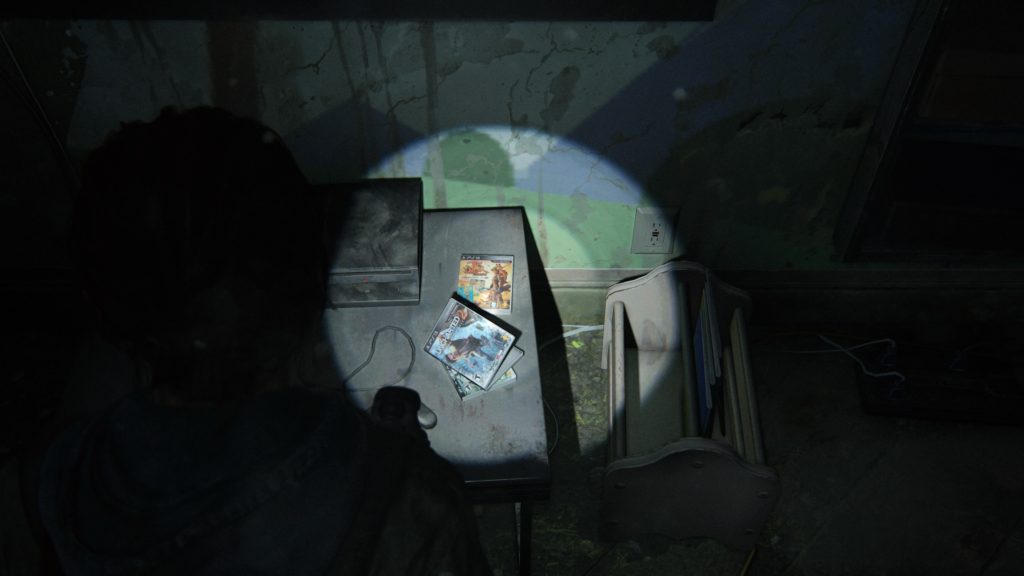
Take The Power Back
And secondly, The Last of Us Part II has one of the most impressive Accessibility Features suites that I’ve ever seen — and playing it pre-launch meant I didn’t even get to see all of those features. TLOU2 goes above and beyond in its efforts to create a game for almost anyone, allowing players to customise everything from the control mapping to the ability to trigger a high contrast display mode which strips all detail away to allow players to see just the models in-game that they can directly interact with.
So much care and time has been put into both the detail and accessibility of TLOU2 that it is shocking to me how easy it is to permanently lock yourself out of solving an area’s puzzle without restarting the chapter. And because of the way checkpointing and auto-saves work, you generally do have to restart the chapter if you go too far — or load a manual save, if you happen to have resorted to save scumming.
Another area the accessibility options helped out in was with aiming. For a company that trades so much in violence — and specifically gun violence — in its recent games, it’s surprising how bad I feel the Naughty Dog aiming model is. I’ve never been able to put my finger — or thumb — on it, but there has been something wrong with the balance between the aim acceleration and the dead zones in almost every ND game since Uncharted: Drake’s Fortune. I’ve often wondered whether it was tied to visual fidelity — whether the gorgeous graphics were resulting in control lag (not dead zones) and the aim acceleration was there to compensate. I’m digressing.
The broader point is that the aim assist options in the Accessibility Features did a fantastic job in solving the issue I was having with the shooting. And that allowed me to get back to the core of what TLOU2 is about — brutal violence, both long-distance and close quarters.
There’s so much in TLOU2 that focuses on violence. One key feature of aim assist as it exists in the game is that it highlights enemies for you before it locks onto them, and this is surprisingly useful thanks to TLOU2’s very tight angled over-the-shoulder-camera.
Killing in the Name
A brilliant choice because it allows the game to stay close to the brutality the player character commits, its drawback is that it robs the player of a lot of peripheral information at the same time. The aim assist fixes that, and allows TLOU2 to shine in the areas it wants to.
Sneaking up on an enemy and stealth killing them with a brutal stab to the trachea never stops having an impact. This is because of the way the game treats these stealth killings — not as silent dispatching, but with choking and gurgling and struggling. With pooling blood and wide eyes and brief-but-cut-off begging.
And when you kill enemies with other weapons, there’s even more of this. There’s whimpering and crying, blood and viscera. When a person falls, others call out their name. “Oh no, ████!” they sometimes cry, even before the typical “I think it came from over there” callouts happen to indicate to the player that they’re onto you.
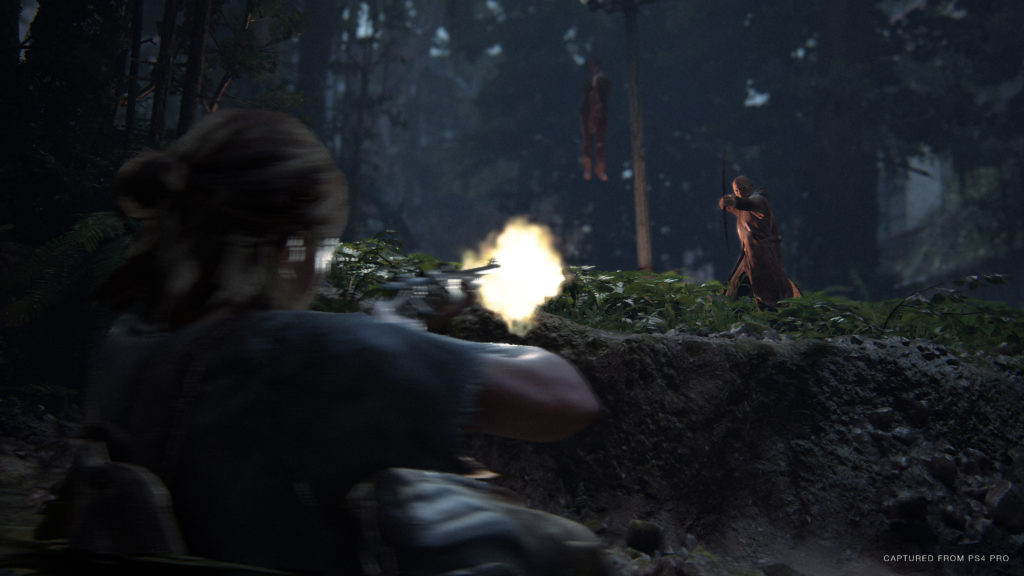
It’s humanising in a way that you don’t often see, and that’s the point of The Last of Us Part II. To humanise these enemies. To remind players that there’s a world beyond our player character’s concerns.
Know Your Enemy
That’s why we find ourselves playing ██ ████ ████ ████ █████. ███ ██████ ████ ██ ███ ████ ██ █████████ ██ ████, ███ ████ ███ ██████ ████. ███ ████ ██ ██ ████ ██ ███ ███ ████ █████ ████ ██ █████, ███ ████ ███ ████ ███ ████ █████ ████ ██ ████. It’s a brilliant idea. If there’s any problem, it’s that they don’t quite stick the landing.
███ ██████ ██ ██ ██ ██ ███ █████████ ██ █████, ██████████ ████ ██████████ ████████ ████ ████. Ellie is a lone wolf. Certainly, she has companions — hell, her lover Dina joins her on her journey to Seattle in the first place. But as her time in Seattle wears on we see her push them away more and more in favour of pursuing vengeance. She lies to her friends about her motives and lashes out when they reveal that they can’t be useful to her cause.
████, ██ ███ █████ ████, █████ ██████████, ███ ███ █████ ███████████ ████ ██ ███ ██. ████ █████ ██ ███ ██ ███ █████ ██████ ██ ███████ ███ ███████ ████ ███ ███ ███ ███ █ ███ ████████ ██ ██████ ██, █████████ █ ███ █████ ██████████ ████████ ██ ██.
██ ███ █████ ██ ███ ██████████ ███ ████ ████. █████ █████ ██ ███ ███████, █████ █ ████ ███████ ██████ █████ ████ ███ ███ ████ ████ ████ ███ ████ ██ ████ ██████ ███ █████ ███ ████████. █████ █████ █████, ███ ███ █████ █████ ████████ █ █████ █ █████████████████ █████████ █ ███ ███ ████ ███ ████. ██████ ███████ ███ █████ ███ █████████ ███ ███ █████ █ ████ ██ █████ ███ ██████ ██ ████ ███ ████ ███ ███████ ██ █████ ██████ █ █████████ █████.
████ █ ██████████ ███, ███ ██ ███████ █████ ████ ██ ████████. ███ ██████ ██ ████ ███ █████ ██ █████ ███ █████. ██████ ███████ ██ ████ ██████ ████ ████ ███ █ ██████ ██████, ███ ███ █████████████ ██ ███ ███████ ███ ███ ████████████ ████████████. ████ ██ ████████ █████ ██ ████, ███ ████ ███ ███████ ███.
████ ███ ████ ███ ███████ ███ ████ █████. ███ ████ ██████, ███ ███ ██ ███████ ███ ████ ████████ ███ ██ ███ ███████ ████████ ███████. ███████ ██ ██████████ ███ ████████ ██████ ██ ████ ████ ██████. ████ ██ ██ ███ ████ █████████.
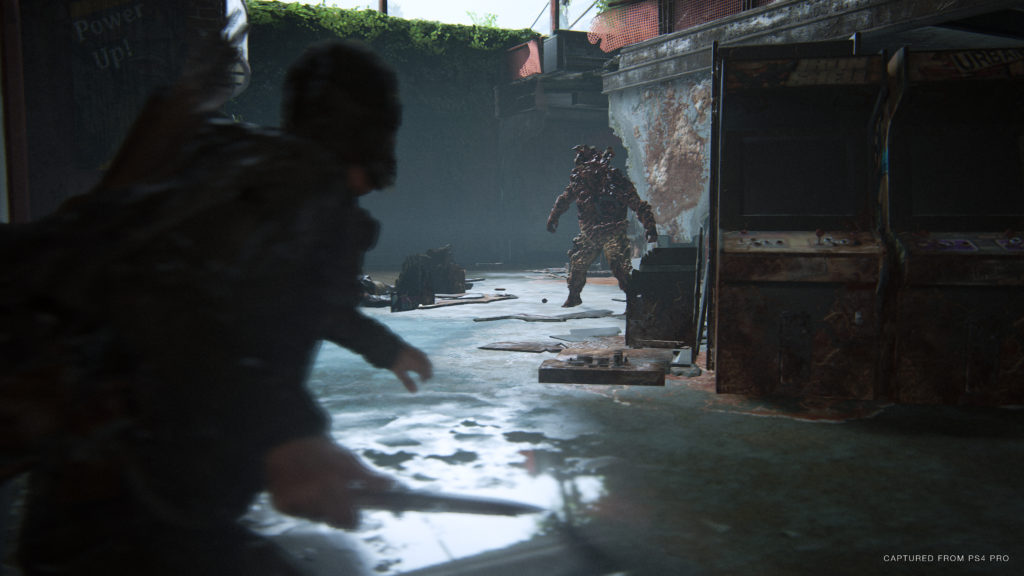
Bombtrack
███ █████ █████ ███ ████ ██ ██ ████ ██ ███ ██ ████ ███ ███████████ █████ ██ ███ █████████ ██ █ ██████████ ████████.
█████ █████ ████ █ ████ ████ ██████ ████ ████████ ██████████ ██ █ ██████████ █████. ██ ██████ ████ ████ ████ █████ ██ ████ ███ ████ █████ ████ ███ ██████ ██ ███ █████████.
Take the dogs. In The Last of Us Part II, dogs patrol some areas alongside human handlers. Personally I didn’t want to kill dogs at the best of times, ███ ██████ ███ █ ████ ████ ███ ███ ██ ████ ███ ████ ██████████. ███ ███ ██ ████ ███ ██ ████ ████. █████ ███ ████ █████ ███. ████ ███ ████, ███ █████ ███ ███ █████████ ███ ███ ████ ████ ██████ ████ █ ███████ ████████ ████ ██ ███████ ██ ████████ ███████.
████ ██ ███ █ ███ ████. ██ ███ █ ███ █████, ███ ████ ████ ███. ██ ███ ████, ██ █████, ██████ ██████ █ █████ ██ ██ ████. ███████ █ ██████████ ██████ ██ ███ ████. ██ ███████ ████ ███ ██ ██ ███ ████. ████, ████ ███ █ ██████ ████ ████ ███████ ███ █████ ███ ███, █████ █ █████ █████ ██████ ██. ███████████ ████████ ████ ████ ███ █████ ███ ██ █████ ███ █. ████ ███ █████ ███ █ ██ ████ ████ ███ ████ ████ ███ █████, ███ ████ ██████ ████ ██ ████.
██ ███ ██████ █ ████ █████ ████ ███████?
The dogs are just a small piece of this puzzle, of course. Anyone who has read a ███████ █████████ ████ █████ ███ ███████. ██████ ███████ ████████ █████ ██ ████, ███ ██████████, ███ ███ ██████████ ██ ███ █████ █████ ████████ ██ ███ ███ ████ █████ ███████ ████ ██. ████ ███ ██████████ ████ ███ ████████ ██ █████ ████ ██████████.
██ █████ ███████ ████ ████ ███ ██ █ ████, ███ ███████ █████████ █████ ██ ████████████ ████████.
I think there might be a version of TLOU2 that did this. A Director’s Cut. ███ ████ ████ ██ ███ █████ ███ ███ ██ █ ████. ███ █████ ███████, █████████ ████ ███ ███ ██ █████ ███████ ███ █ █████ ███ ██ █████ █████████ ████ █████, █████ █████████████ ████ ███████ ███ ███████ ███ ████ ████████████.
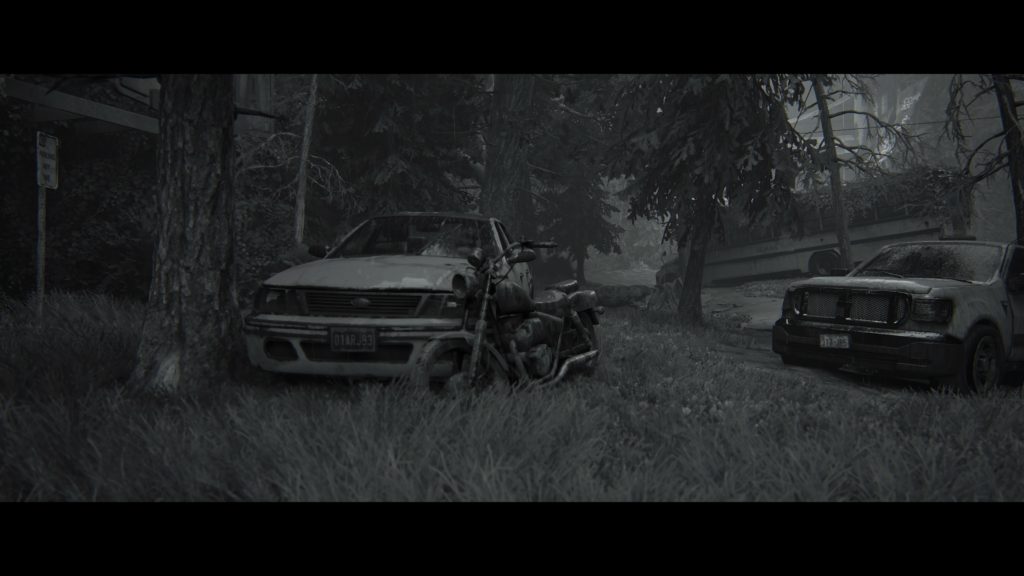
███ █████ █ █████ ███ ████ ██████ ██████ ████████ ██ █████ ███ ██ ████████████, █ █████████ █████ █████████ ███ █████████ █████ ████ █████ ███ █ ████████ ██████. ███ ██████ ██████████ █ ██████ █████ ████ ███████ ████ ███ ███████ ████ ██████████ █████ █████ ██ █████████████ ██████ ██ ███ ███ ███ ██ █ ████. Ellie’s actions could have immediate impact. Her assault on the hospital would weigh heavier on a player ████████ ████████ ███ █████ ██ ████████ ███████ █ █████ ███ ██ ██ ████.
███████ ███████ █ █████ ████ ████ ██ ███ ███ ████ ██████████ █████ ████████. █████████ ███████ █████ ██ █ ████ ██ ████ ███ ███ ████, █████████ ████ ████ ███ █████ ███ ████ ██ ██████ █████ ████ ██ ████ ████, ███ █ █████ ██ ███████ ███ ████. ████ ██ ███████, █ █████ ██████ ████████ ████ █ ████ ██████, ███ █ ████ ██████ ███████. ███ ████ █ ███ ███████ ██ ████ ██ █████ ███████, █████ ██ ████ ██ ████ ███ █████████.
TLOU2 has a ████ █████ ██████ ███████. ██ ████ █████ ██ █████ ██████████, ██████ ███ ██████ ████ ██ ██████ ████ ███ ████ ██ ██ ██████ ██████ ███████ ██ ███ ██████ ██ ██████ ███████ ████████.
Some of my favourite gameplay came right at the end, so I’m not exactly complaining █ ███ █████, ████ █ ████████████ ███████████ ██ ████ ██████████. ███ █████ ████ ██████ ██ █████ ██ ███ ████ ████ ████ ███ ██ ████ ██ ██ ██ ████ ███████████ ███████████ ██ ████ ████ █████ ███████ ███ ████ ███████. █ ████ ██████ ████████ ██ ███ ████ █ █████████ ████ ██ ██ ██████ ██ ██████ ███████ █ ███ ████ █████ ██ ██████. ████, ████████ ██ ███████, ███ ██ ████ ██ ████ ██████. █ ██████ ████ ████ ███ ████████ ██ ██████ ██ ██████ █████ ███ ████. ████ ███ ███████ ████ ██████████ ██ █████ ██ █ ██████ ████ █████████ ██ █ █ ███████████ ████ █████ ██████ ███████ ███ ███ ██████.
Township Rebellion
That said, The Last of Us Part II confronts you with the violence of your actions all the way up to the last moments. Those final levels are where the game’s brutality ramps up. People explode, they’re gutted and infected and tortured and stabbed and slashed and sliced and everything else. The blood flows free, and when it’s not flowing there’s never time enough for it to scab over.
It wants you to sit there in your corpse-ulence, wallowing in the filth of the game’s violence as you gleefully setup another chain-reaction of murder, or you lure some hapless fools into a proximity mine that will gib them. It all works so smoothly, runs so well. It’s gorgeous and accessible and expertly crafted with the perfect balance of exploration and tense combat action. It gives you everything you need to brutalise your enemies, and then it asks you whether or not you should.
When I’d hear the yelp of a dog or an enemy cry out someone’s name, I found myself wondering repeatedly if TLOU2 could be completed as a ‘pacifist’, sneaking around enemies and avoiding combat wherever possible. I wondered if this game, which so happily rope-a-doped players with ███ █████ ████ █████ █ ████████████████, was trying to go full Kojima on me. Whether I could simply opt-out of the violence.
I never attempted it. The Last of Us Part II asks us to reflect on ourselves in relation to violence in video games and I did. What I discovered is that I love it.

